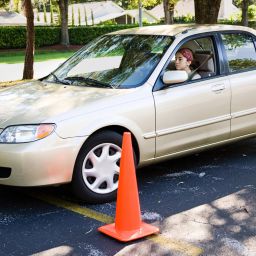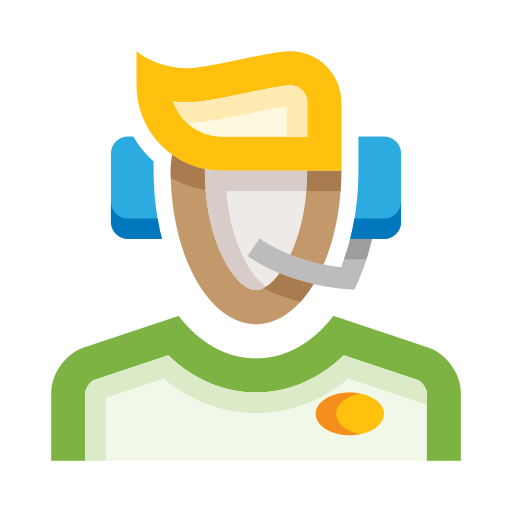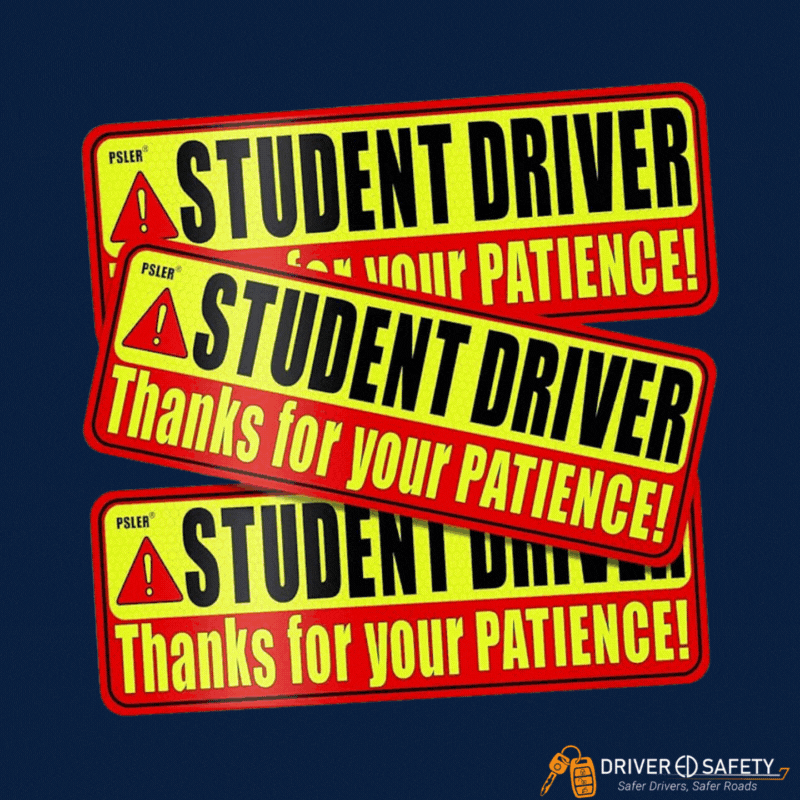
Driving is often seen as a rite of passage for teenagers. However, after a couple of years, driving becomes incredibly normal; you drive to work, school, home, restaurants, and friends’ houses. Whether you’re a brand-new driver or an experienced one, you should always be paying attention to the road so you can minimize distractions. April, which is Distracted Driving Awareness Month, is a great time to reflect on the responsibility we all carry as drivers and take accountability for our habits in an effort to do better.
When most people hear the phrase “distracted driving,” texting often comes to mind. Although texting definitely plays a large role, that’s only one of many distractions that could lead to an accident. More so, there are three different types of distractions to look out for while you’re driving—cognitive, visual, and manual. With every distraction comes a simple solution you can do to stay focused on the journey ahead.
KEEP YOUR EYES ON THE PRIZE
What can you do in two seconds? Probably nothing productive. The maximum amount of time a driver can safely divert their attention from the road is two seconds. Any more of a visual distraction can be detrimental to your and others’ safety on the road. Whether you’re scoping out a nearby accident or staring at a beautiful sunset—keep it brief. Or better yet—stay focused on what’s ahead and keep on driving.
Similarly, if you find yourself looking over at your phone at every ping and ring, you’re probably going to get a notification that captures more of your attention. Those little drop-down previews of notifications that show up on your home screen can be convenient, but if you find yourself trying to read them, then you’re putting yourself in danger. The best thing you can do is to either silence your phone or put it on “Do Not Disturb” mode, so you’re not even tempted to peek.
CLEAR YOUR MIND
The largest cause of distracted driving crashes (at 62%) is a driver being lost in thought or letting their mind wander. Ever catch yourself daydreaming behind the wheel? This is a great example of cognitive distraction, which takes your mind off the road. If you drive the same route all the time, you may find yourself zoning out and not even remembering parts or all of the drive. This can be especially dangerous if the road conditions are anything but perfect (think rain, wind, snow, ice, potholes, etc.) You always want to check in with yourself before getting in the driver’s seat and confirm whether or not you’re mentally prepared to drive.
Talking to passengers can also be distracting. This isn’t to say you can’t talk to your friend in the passenger seat, but if you find yourself moving past chit-chat and toward something more volatile, like a heated argument, it may be time to pull over in a safe area. Driving while crying or visibly angry increases the risk of crashing tenfold. Whatever you’re arguing about isn’t worth the potentially tragic (and expensive) consequences of a car accident. The same rule of thumb goes for road rage. If you’re struggling to manage some intense emotions behind the wheel, it may be time to pull over safely and take a moment to collect yourself. Focusing on your breath usually does the trick by calming down your nervous system!
KEEP YOUR HANDS ON THE WHEEL
Be honest with yourself… there’s no way you can eat a cheeseburger, drink an iced tea, dip fries in ketchup, and still continue to drive safely. Manual distracted driving takes one or both of your hands off the steering wheel, which means eating while driving is a big no-no.
Even if you desperately don’t want to go into your choice fast food restaurant, you can always order in the drive-through and stay in the parking lot to eat. After all, it is called fast food, and it shouldn’t take long to finish your meal.
Another manual distraction culprit is your driving entertainment, like music or podcasts. If your podcast episode has come to an end and you’re ready for more, make sure your queue is set to autoplay, so you don’t need to pick up your phone to go searching. The same goes for your music. Set your playlist before you put it in drive.
“I ONLY TEXT AT STOPLIGHTS”
Texting while driving deserves its own call-out here because it encompasses all three types of distraction. Even if you “only text at a stoplight,” it’s still a dangerous and punishable offense.
In many states, including Indiana, it is illegal for any driver to type a text message, transmit a message, or read emails while driving. This is still true if you are stopped at a light. If you’re under the age of 18, then you aren’t allowed to use your cell phone for any reason, even if it’s hands-free. If you get pulled over, not only could the ticket be costly and affect your driving record, but think about the damage you could do if you’re looking at your phone for even a few seconds.
On average, sending or reading a text takes your eyes off the road for five seconds. At 55 mph, that’s like driving the length of an entire football field with your eyes closed. Go ahead and read that again.
Whether the distraction is manual, visual, cognitive, or all three at once, there are simple ways to keep them to a minimum. Don’t forget that you are navigating a high-speed two-ton metal machine down the road surrounded by other people doing the same thing. Keep your eyes, hands, and brain distraction-free. Make a goal to maintain a clean driving record, and your passengers, fellow drivers, and the insurance company will thank you for it.
We work with students to develop effective defensive driving and behavioral patterns using foundational concepts. Follow us on social media to stay in the know about driving tips, or sign up for our online Driver Safety course.



















